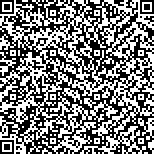| 摘要: |
| 办公建筑是企事业单位人员从事各
类业务活动的重要场所。办公建筑的室内光
环境质量将直接影响人员的视觉功效和视力
健康,对提高办公场所的人居环境健康具
有重要意义。本文通过28名被试者对安菲莫
夫表读取完成时间和正确率的数据分析,结
合主观问卷调查反馈数据,结果发现:视觉
功效与垂直照度具有密切相关性;垂直照度
在300-600 lx区段内,21—40岁的人的舒适
度较高;不同年龄段对最佳垂直照度的需求
不同,性别对舒适度影响较小。本文对提升
办公场所室内光环境质量,优化办公照明设
计,改善办公场所人居环境,具有重要的指
导价值,同时将提高学者对垂直照度的关注
度,对未来照明建筑一体化概念的提出具有
重要意义。 |
| 关键词: 办公建筑 光环境 垂直照度 视觉
功效 视觉舒适度 |
| DOI:10.13791/j.cnki.hsfwest.20200410 |
| 分类号: |
| 基金项目:国家十三五课题(2018YFC0705101) |
|
| Evaluation of Indoor Vertical Illuminance on Visual Efficacy in Office Buildings |
|
MA Xiufeng,MA Junrong,WANG Lixiong,YU Juan
|
| Abstract: |
| Office building is an important place for enterprises and institutions to engage in
all kinds of business activities. Good office light environment can improve the enthusiasm of
office workers, improve the efficiency of work, and is conducive to the physical and mental
health of people. The light environment evaluation standard of traditional lighting is 0.75 m.
The horizontal illuminance of the working face is the main part, and there is no specific
requirement for the vertical illuminance at present. When the human eye observes the carrier
information of the vertical plane, the vertical illumination will directly affect its visual effect.
The appropriate vertical illumination is of great significance to improve the visual effect and
the living environment of the office. In this paper, 28 subjects analyzed the data of reading
completion time and accuracy of anfimov table, combined with the subjective questionnaire
survey feedback data, the results showed that: visual efficacy and vertical illumination have an
important correlation. In the range of this vertical illumination experiment (25-850 lx), with
the increase of vertical illumination, the completion time of subjects gradually decreased, and
the accuracy gradually increased. When the vertical illumination exceeds 550 lx, the effect on
the accuracy of the subjects is weakened. The vertical illuminance has an important influence
on the visual comfort. According to the subjective evaluation questionnaire of the subjects and
the collected data, when the vertical illuminance is in the 300-600 lx range, the 21-40-year-old
people’s comfort is higher. Under the vertical illumination of 25-250 lx, the visual comfort is low;
when the vertical illumination exceeds 750 lx, the comfort of some people is reduced. This shows
that the vertical illuminance has an important impact on the visual comfort. Too high or too low
vertical illuminance will cause certain discomfort. Different age groups have different demands
for the best vertical illuminance, and gender has little influence on comfort. Combined with the
comfort curve, it can be seen that the threshold value of the best vertical illuminance is different
in different age groups. The 21-30-year-old people have a strong adaptability to the environment
with the vertical illuminance in the range of 300-850 lx and a high degree of comfort. However,
for the 31-40-year-old people, when the vertical illuminance breaks through 700 lx, the comfort
decreases with the increase of illuminance value, which indicates that the people in this age group
have a poor adaptability to strong light. In the distribution curve of gender comfort, the tracks of
men and women almost coincide, indicating that gender has little effect on visual comfort, which
is the same as the results of Ma Jian’s experimental study on the luminance perception of single
landscape element landscape lighting. This paper puts forward a new theory of the integration of office building interior lighting. To improve the vertical illuminance to the high visual effect and the optimal comfort zone value, it is necessary
to supplement the light distribution from the side of the space. The traditional lighting forms can no longer meet the functional requirements. The
new lighting forms need to be realized by combining the lighting equipment and the building structure with the components, which is the birth of
the theory of office lighting building integration. LED lighting building integration is an innovative lighting mode that combines lighting devices
with indoor interface and components to meet the requirements of traditional lighting and aesthetics, and has the capacity of space utilization
optimization, light environment improvement, energy efficiency improvement, and construction industrialization, so as to realize comfortable
and healthy lighting. This paper reveals the law of vertical illumination and visual effect. Traditional lighting standards pay attention to the
threshold value of horizontal illumination and ignore the important influence of vertical illumination. Through the analysis of experimental
data, this study obtained the influence rule of vertical illumination and visual efficacy, and at the same time, the subjective evaluation feelings
of the subjects were datalized. It was proposed that the appropriate vertical illumination range was 300~600 lx, and the requirements for the best
vertical illumination were different in different age groups. The 21-35-year-old people were more suitable for the vertical illumination of 250~700 lx,
and the 36-40-year-old people were 150-600 in gender. The vertical illuminance of 0 lx is suitable. In this paper, the design reference value of vertical
illuminance of office lighting is proposed. Through experiments and questionnaires, this study obtains the change rule of vertical illumination and visual
effect, which provides an important reference value for the future office space interior lighting design. The best vertical illuminance of different ages is
different. When the lighting designer designs the office lighting, he can customize it according to the age object. Gender has little influence on comfort,
and lighting designers can ignore the gender influence of office objects. The results of this study have important guiding significance for improving the
indoor light environment quality, optimizing the office lighting design and improving the living environment of the office. |
| Key words: Office Buildings Light Environment Vertical Illuminance Visual Efficacy Visual Comfort |


